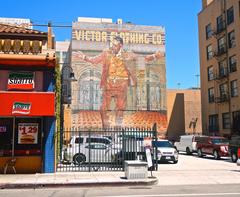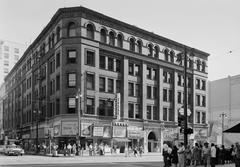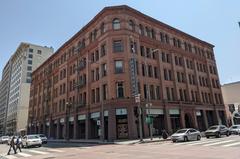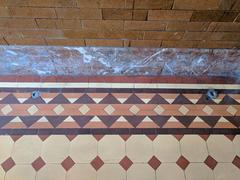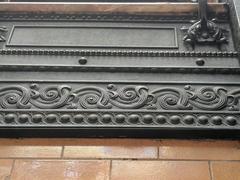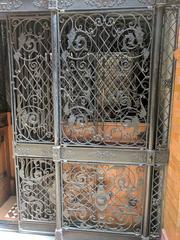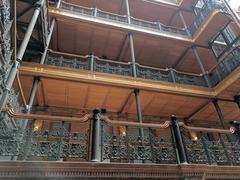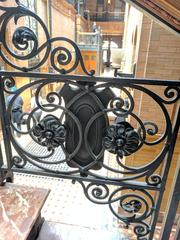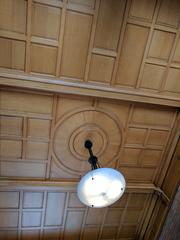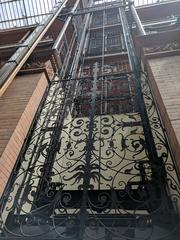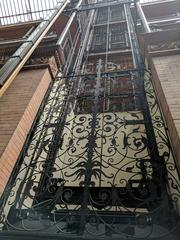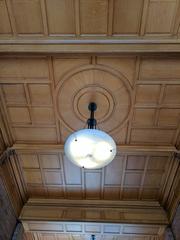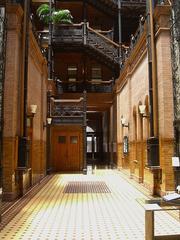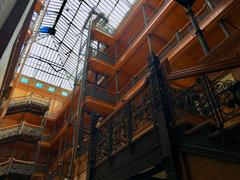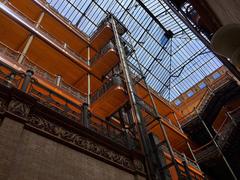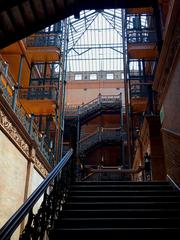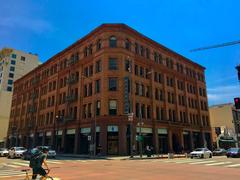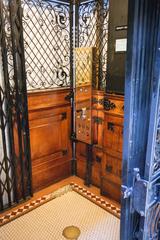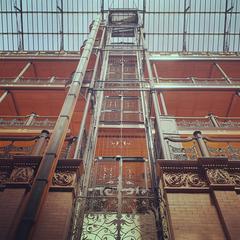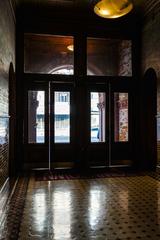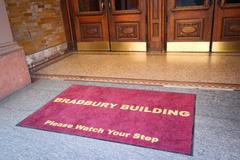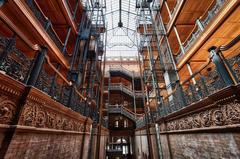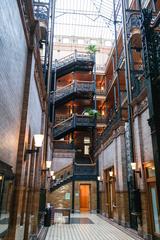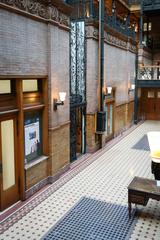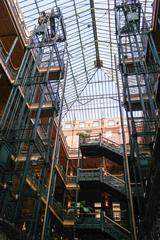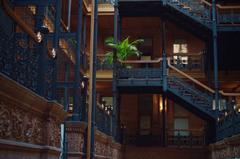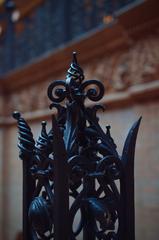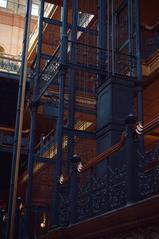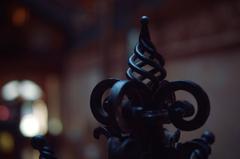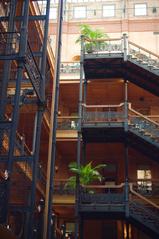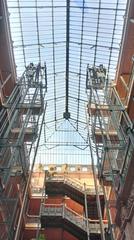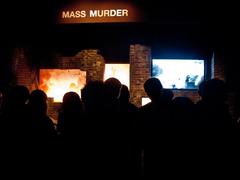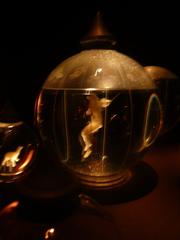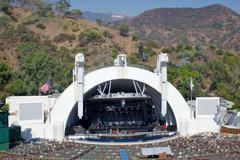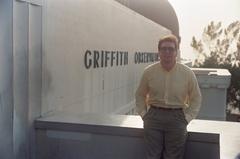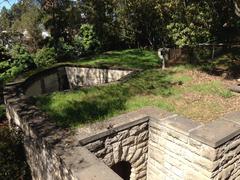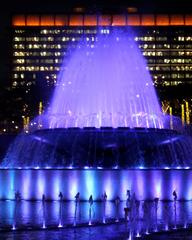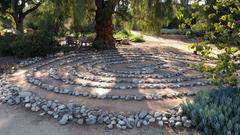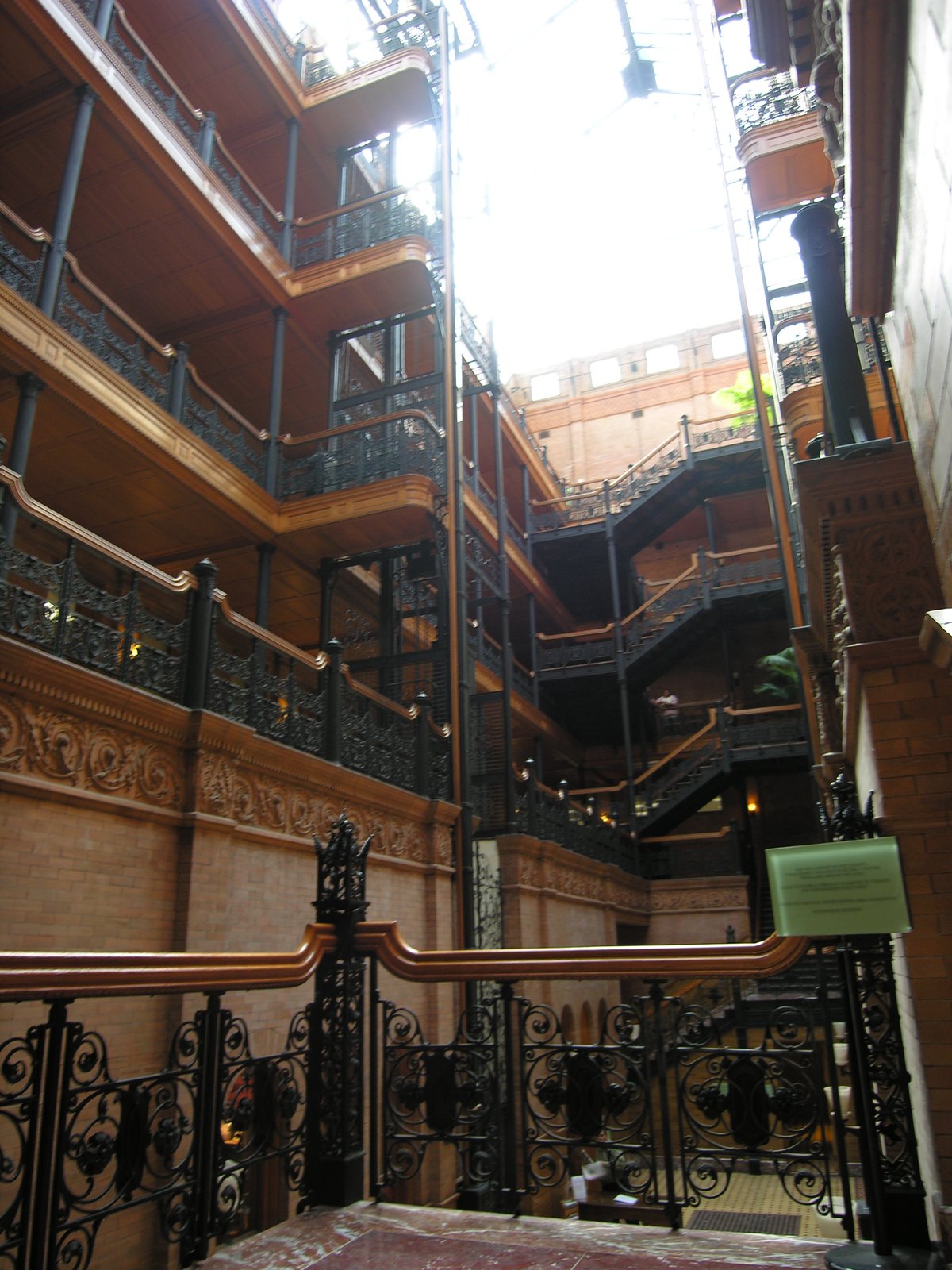
Comprehensive Guide to Visiting Bradbury Building, Los Angeles, United States
Date: 19/07/2024
Introduction
The Bradbury Building, located at 304 South Broadway in downtown Los Angeles, is an architectural marvel and a historic landmark that has captivated visitors since its completion in 1893. Designed by George Wyman, this unique structure showcases a blend of Italian Renaissance Revival and Romanesque Revival styles, making it a distinguished example of late 19th-century architectural creativity. The building was commissioned by Lewis L. Bradbury, a wealthy gold-mining entrepreneur, who envisioned a grand edifice that would stand as a testament to his success and vision. Today, the Bradbury Building is renowned for its breathtaking interior, featuring a five-story central atrium, ornate ironwork, open cage elevators, and a skylight that floods the space with natural light, creating a warm and inviting atmosphere (Los Angeles Conservancy; National Park Service).
Beyond its architectural beauty, the Bradbury Building holds significant cultural importance. It has been featured in numerous films, television shows, and music videos, most notably in Ridley Scott’s 1982 science fiction film, “Blade Runner.” This iconic landmark has not only contributed to the artistic landscape of Los Angeles but also played a pivotal role in the city’s urban renewal efforts. Designated a National Historic Landmark in 1977 and listed on the National Register of Historic Places in 1971, the Bradbury Building continues to be a vibrant part of Los Angeles’s cultural and economic fabric, attracting tourists, architecture enthusiasts, and businesses alike (Architectural Digest; National Trust for Historic Preservation).
Table of Contents
- Introduction
- History of the Bradbury Building
- Visitor Information and Tours
- Cultural Significance and Media Appearances
- Preservation Efforts and Modern-Day Use
- Nearby Attractions and Travel Tips
- FAQs
- Conclusion
History of the Bradbury Building
Origins and Construction
Commissioned by gold-mining millionaire Lewis L. Bradbury, the Bradbury Building was intended to be a testament to his wealth and vision. Construction began in 1892 and was completed in 1893. The design is often attributed to George Wyman, who was initially an assistant to the original architect, Sumner Hunt. However, it was Wyman who ultimately brought Bradbury’s vision to life after Hunt was dismissed from the project (Los Angeles Conservancy).
Architectural Inspiration
The design of the Bradbury Building was heavily influenced by Edward Bellamy’s 1887 science fiction novel “Looking Backward.” In the novel, Bellamy describes a utopian society with a futuristic building that features a grand atrium, open staircases, and abundant natural light. Inspired by this vision, Wyman incorporated these elements into the Bradbury Building, creating an interior that is both functional and aesthetically pleasing (ArchDaily).
Design and Features
The Bradbury Building is renowned for its unique architectural features, which include a five-story central atrium, open cage elevators, and ornate ironwork. The atrium is illuminated by a large skylight, allowing natural light to flood the interior and create a warm, inviting atmosphere. The building’s intricate ironwork, crafted by the local firm of J. W. Fiske, adds a touch of elegance and sophistication to the space. The use of marble, polished wood, and brick further enhances the building’s aesthetic appeal (National Park Service).
Early Tenants and Uses
Upon its completion, the Bradbury Building quickly became a sought-after location for businesses and professionals. Early tenants included law firms, insurance companies, and real estate offices. The building’s prime location in the heart of Los Angeles made it an ideal choice for businesses looking to establish a presence in the bustling downtown area. Over the years, the Bradbury Building has housed a variety of tenants, including government offices, retail stores, and even a school (Los Angeles Times).
Decline and Restoration
By the mid-20th century, the Bradbury Building had fallen into disrepair. The once-grand atrium was covered with grime, and the building’s ornate ironwork was in need of restoration. In the 1970s, the building was threatened with demolition, but preservationists rallied to save it. In 1971, the Bradbury Building was designated a National Historic Landmark, and efforts to restore the building to its former glory began in earnest (National Trust for Historic Preservation).
Visitor Information and Tours
Visiting Hours and Tickets
The Bradbury Building is open to the public Monday through Friday from 9:00 AM to 5:00 PM, and on Saturdays from 10:00 AM to 5:00 PM. It is closed on Sundays. Admission is free, but visitors should check the official website for any updates on visiting hours and ticket information.
Guided Tours and Accessibility
Guided tours are available for those who wish to delve deeper into the building’s history and architectural significance. These tours are often conducted by knowledgeable guides from the Los Angeles Conservancy. The Bradbury Building is accessible to individuals with disabilities, with elevators and ramps available to ensure a comfortable visit.
Cultural Significance and Media Appearances
The Bradbury Building’s cultural significance extends beyond its architectural beauty. It has been featured in numerous films, television shows, and music videos, cementing its status as an iconic Los Angeles landmark. Perhaps most famously, the building was used as a key location in the 1982 science fiction film “Blade Runner,” directed by Ridley Scott. The film’s depiction of a dystopian future contrasted sharply with the building’s historic elegance, creating a visually striking juxtaposition (Architectural Digest).
Preservation Efforts and Modern-Day Use
Preservation Efforts
Ongoing preservation efforts ensure that the Bradbury Building remains a cherished part of Los Angeles’ architectural heritage. The building’s owners and preservationists work diligently to maintain its historic features while also making necessary updates to meet modern building codes and standards. These efforts have helped to preserve the Bradbury Building’s unique character and ensure that it remains a vibrant part of the city’s cultural landscape (Los Angeles Conservancy).
Modern-Day Use
Today, the Bradbury Building continues to serve as a functional office space while also attracting tourists and architecture enthusiasts from around the world. The building’s ground floor is home to various retail establishments, while the upper floors house offices for creative and tech companies. Guided tours are available, allowing visitors to explore the building’s stunning interior and learn about its rich history (Discover Los Angeles).
Nearby Attractions and Travel Tips
Nearby Attractions
While visiting the Bradbury Building, consider exploring other nearby attractions such as the Grand Central Market, the Museum of Contemporary Art (MOCA), and the historic Los Angeles Theatre. Each of these sites offers a unique glimpse into the cultural and historical fabric of Los Angeles.
Travel Tips
When planning your visit, consider using public transportation as parking in downtown Los Angeles can be challenging. The Bradbury Building is easily accessible via the Metro Red and Purple Lines, with the Pershing Square Station located just a short walk away. Be sure to wear comfortable shoes, as you’ll likely be doing a fair amount of walking during your visit.
FAQs
Q: What are the Bradbury Building’s visiting hours?
A: The Bradbury Building is typically open Monday through Friday from 9:00 AM to 5:00 PM, and on Saturdays from 10:00 AM to 5:00 PM. It is closed on Sundays.
Q: How much are tickets to the Bradbury Building?
A: Admission to the Bradbury Building is free. Guided tours may have a fee, so check the official website for details.
Q: Is the Bradbury Building accessible to individuals with disabilities?
A: Yes, the Bradbury Building is accessible, with elevators and ramps available for visitors with disabilities.
Q: Are guided tours available?
A: Yes, guided tours are available and are often conducted by knowledgeable guides from the Los Angeles Conservancy.
Conclusion
The Bradbury Building stands as a testament to the vision and creativity of its designers and builders. Its rich history, architectural beauty, and cultural significance make it a must-visit destination for anyone interested in the history and heritage of Los Angeles. Whether you’re an architecture enthusiast, a history buff, or simply a curious traveler, the Bradbury Building offers a fascinating glimpse into the past and a reminder of the enduring power of great design. Be sure to check out the building’s visiting hours and plan your visit to this iconic Los Angeles landmark today (Los Angeles Conservancy; Discover Los Angeles).
References
- Los Angeles Conservancy. Bradbury Building. Retrieved from Los Angeles Conservancy.
- National Park Service. Bradbury Building. Retrieved from National Park Service.
- Architectural Digest. (Year). Bradbury Building Blade Runner. Retrieved from Architectural Digest.
- National Trust for Historic Preservation. Bradbury Building. Retrieved from National Trust for Historic Preservation.
- Discover Los Angeles. Bradbury Building. Retrieved from Discover Los Angeles.

